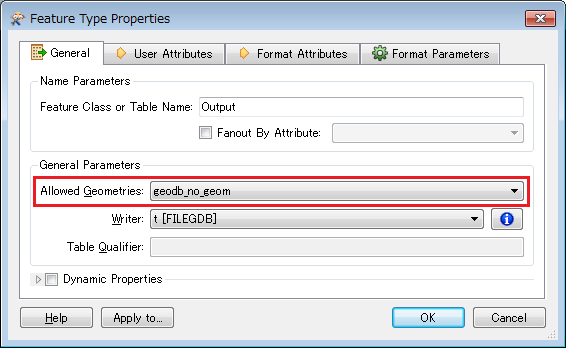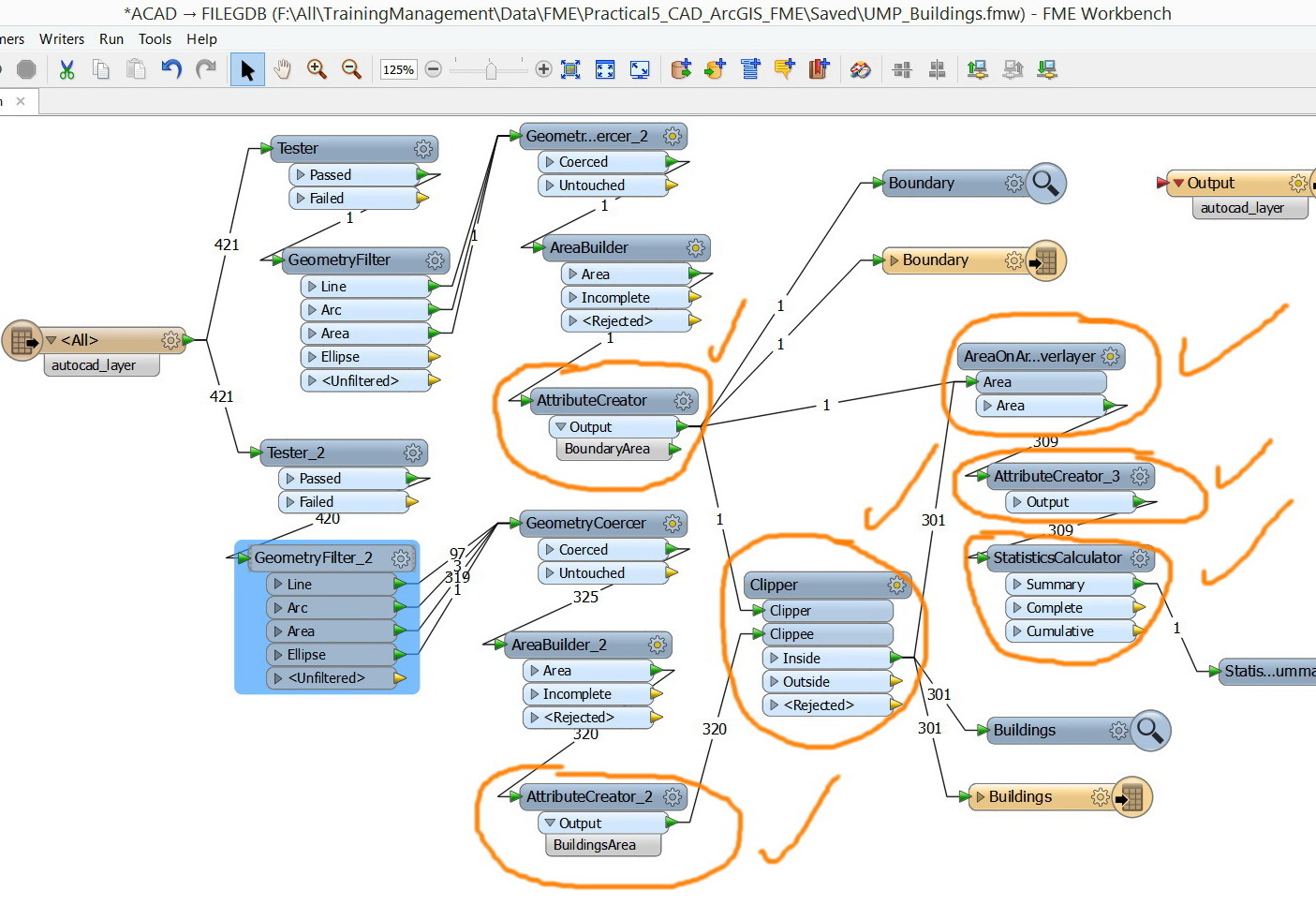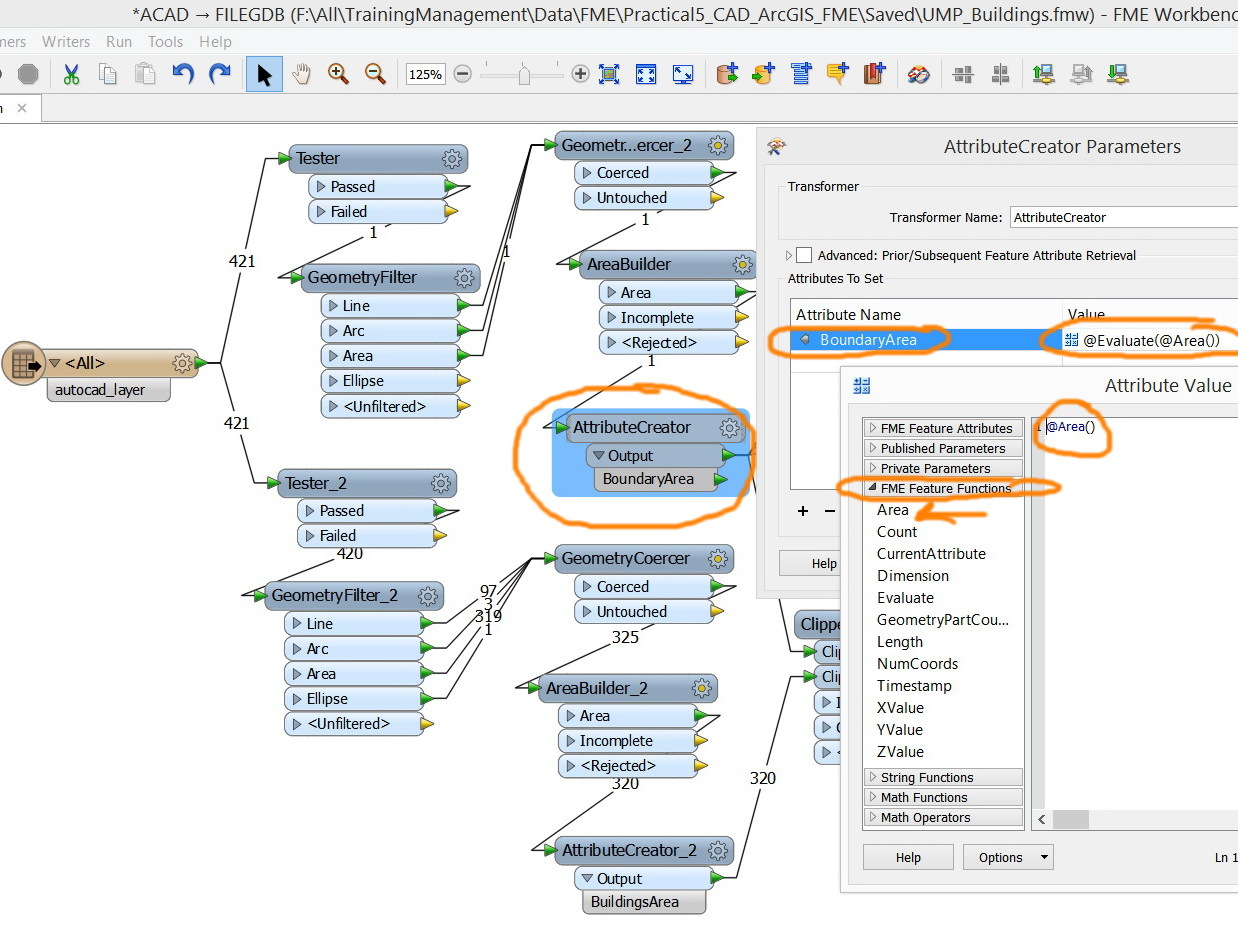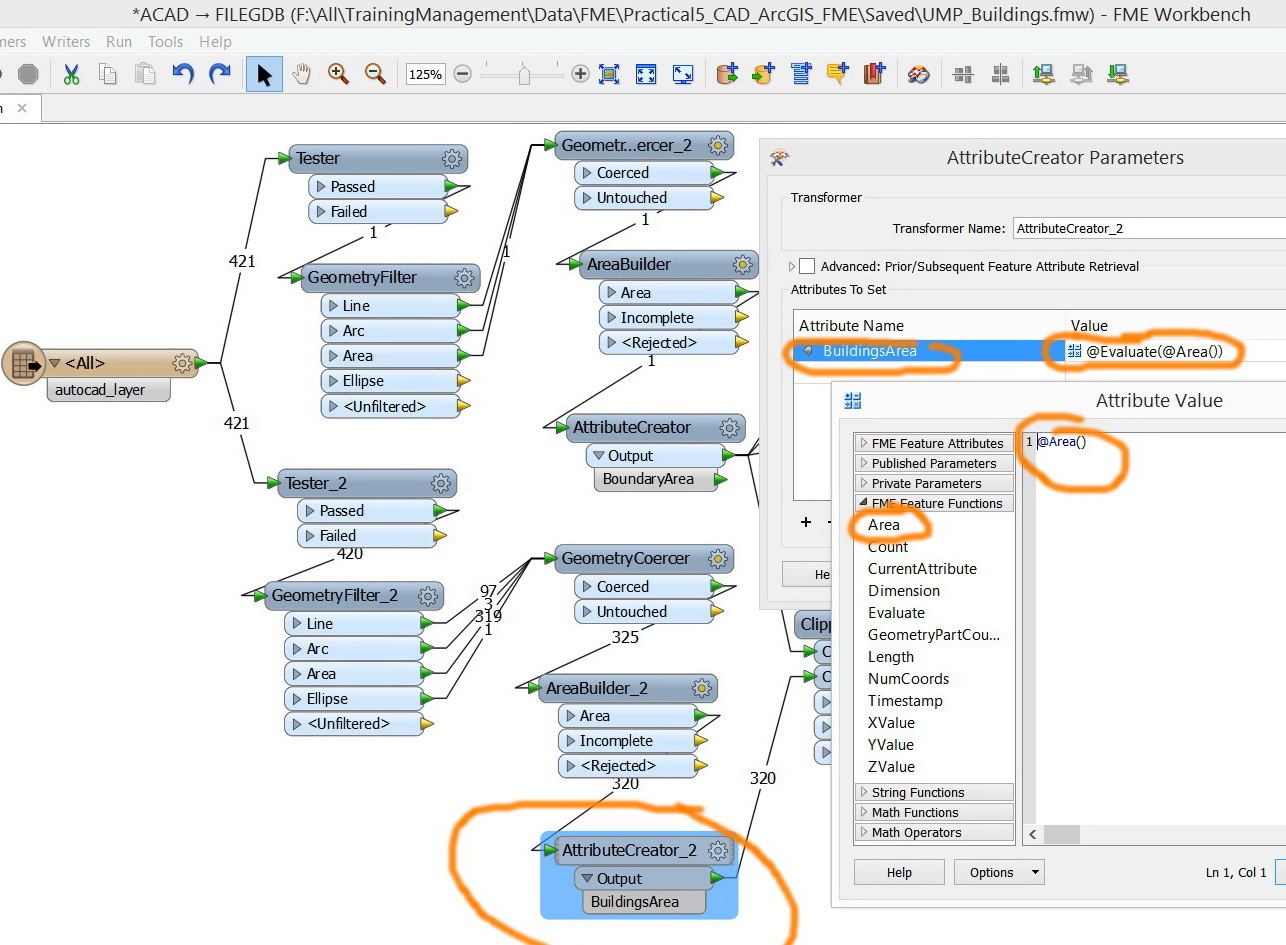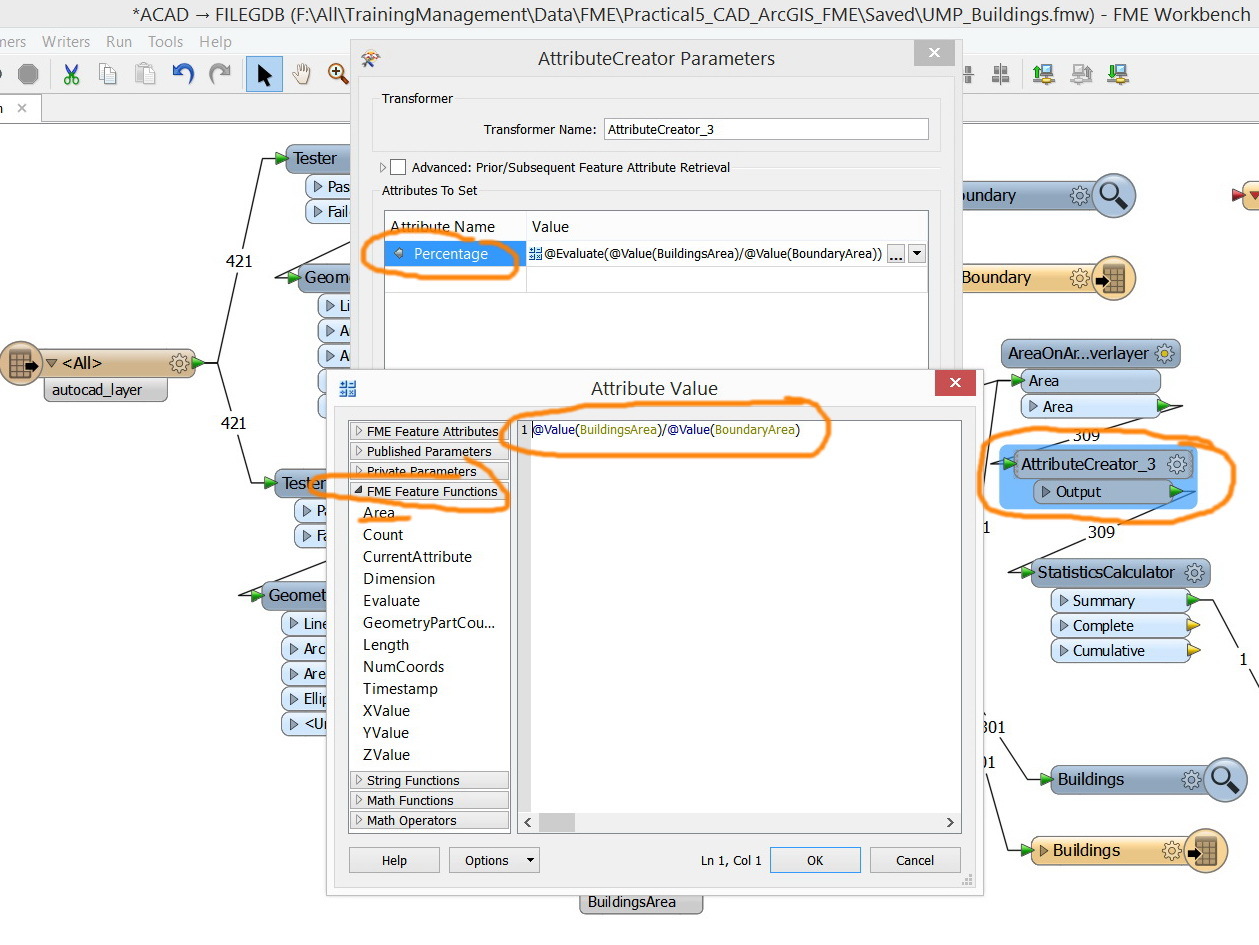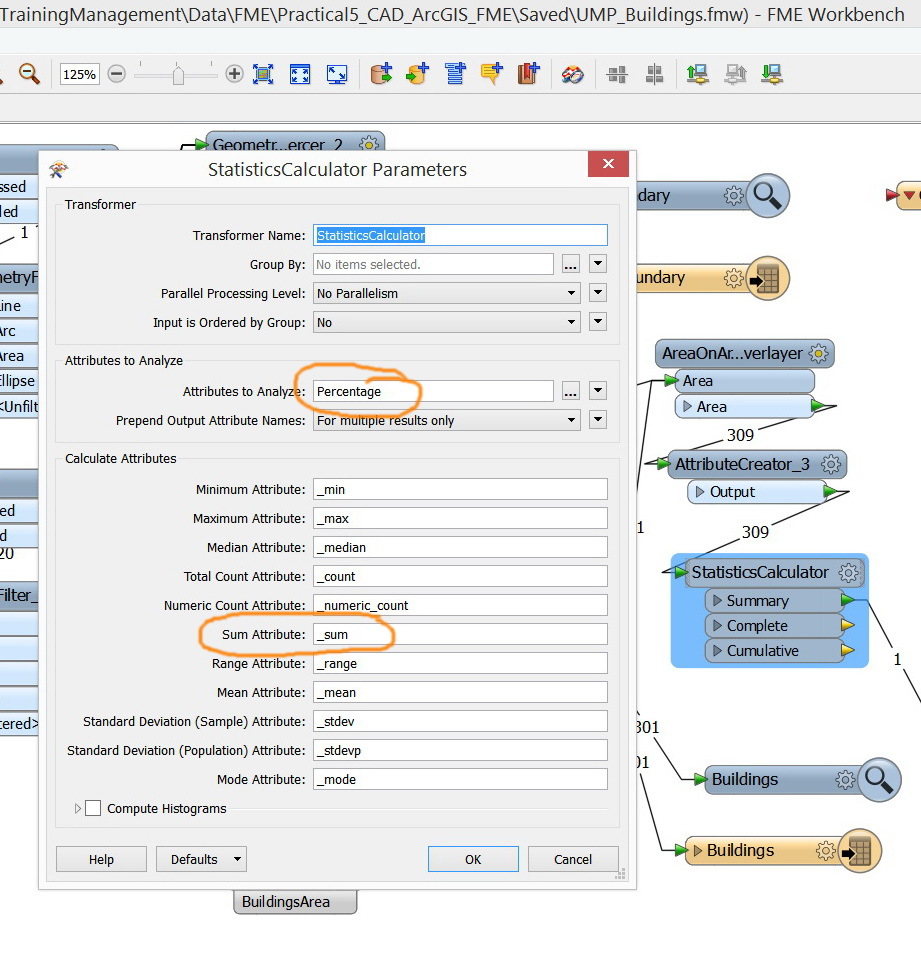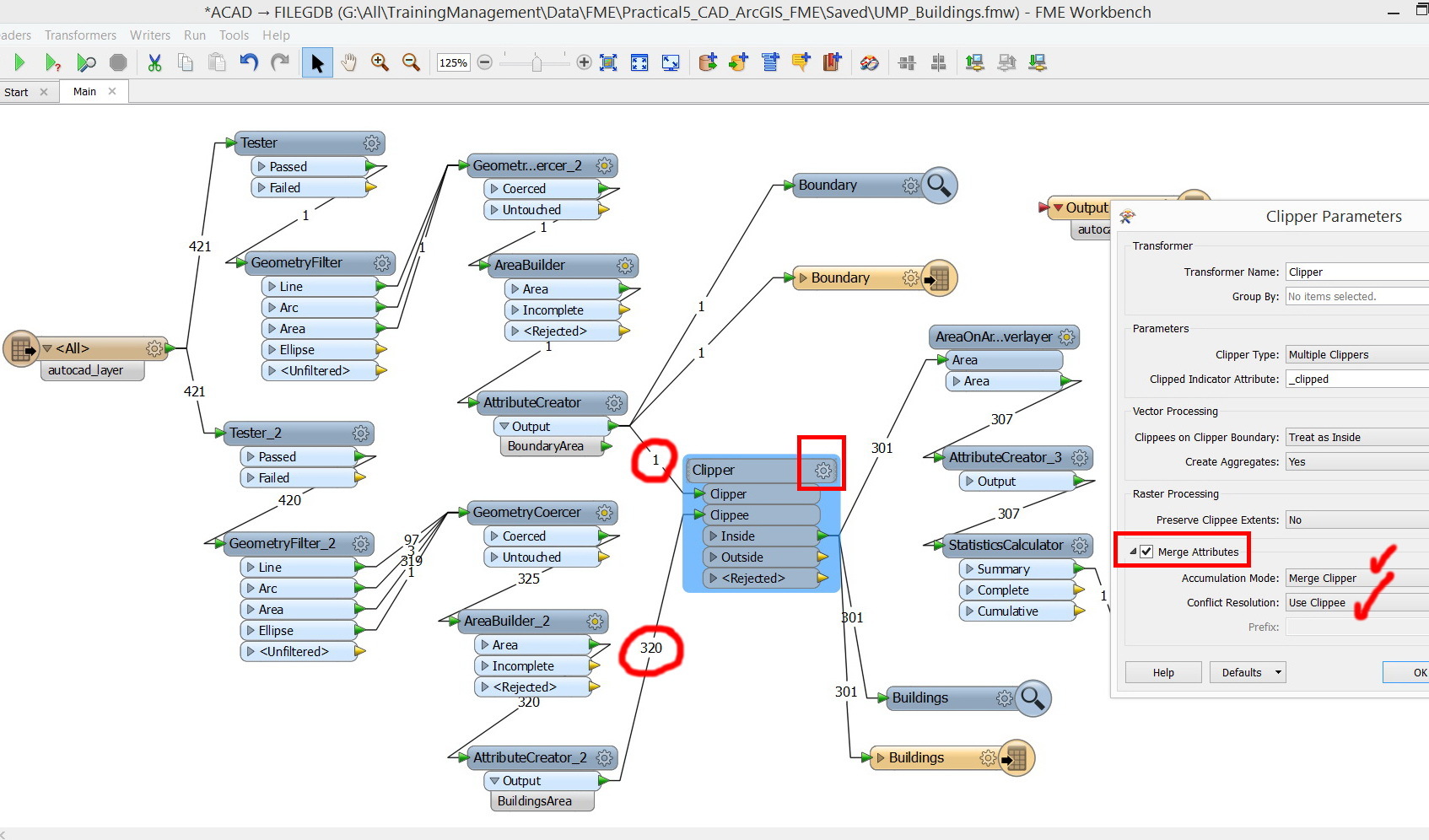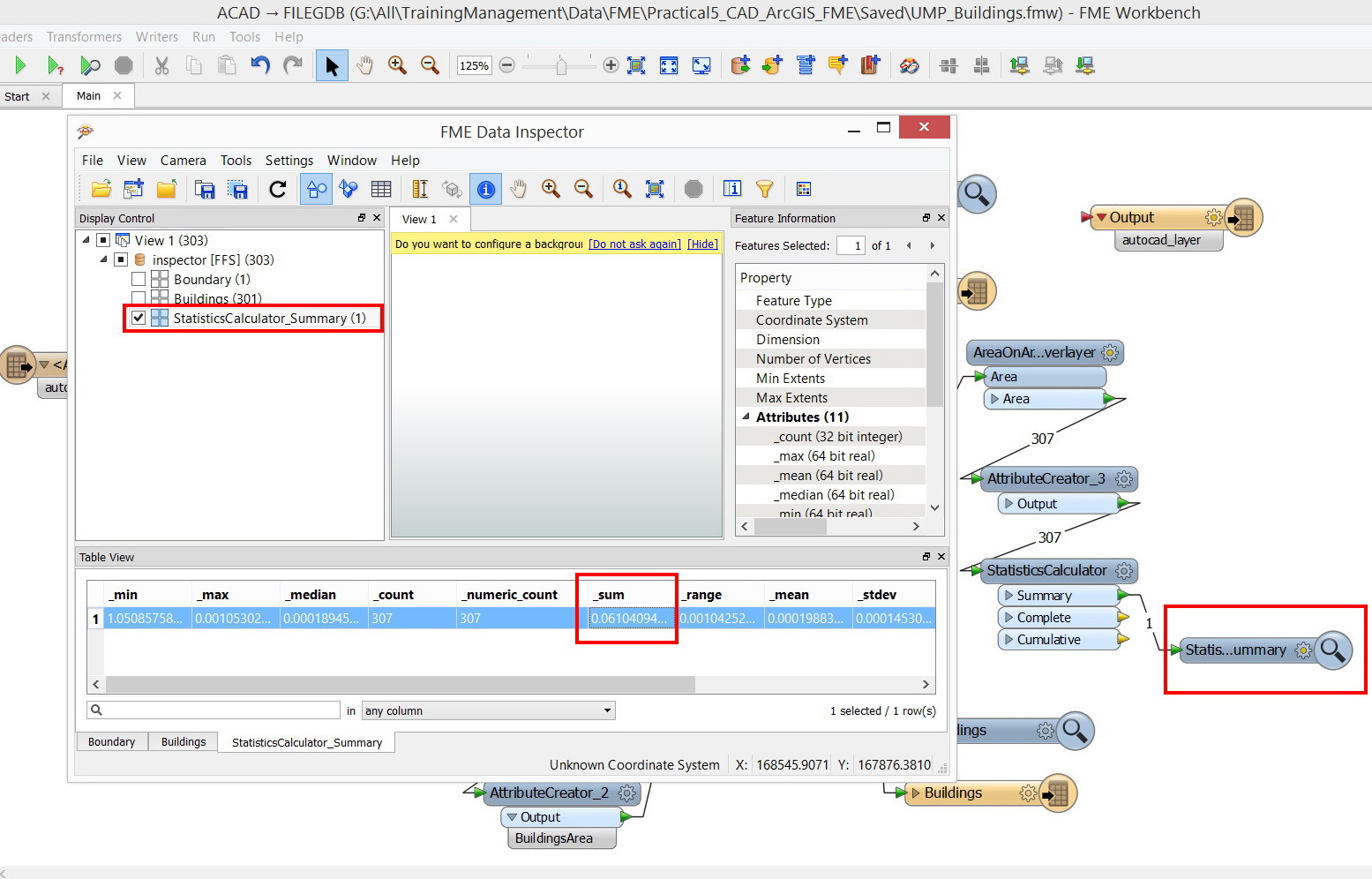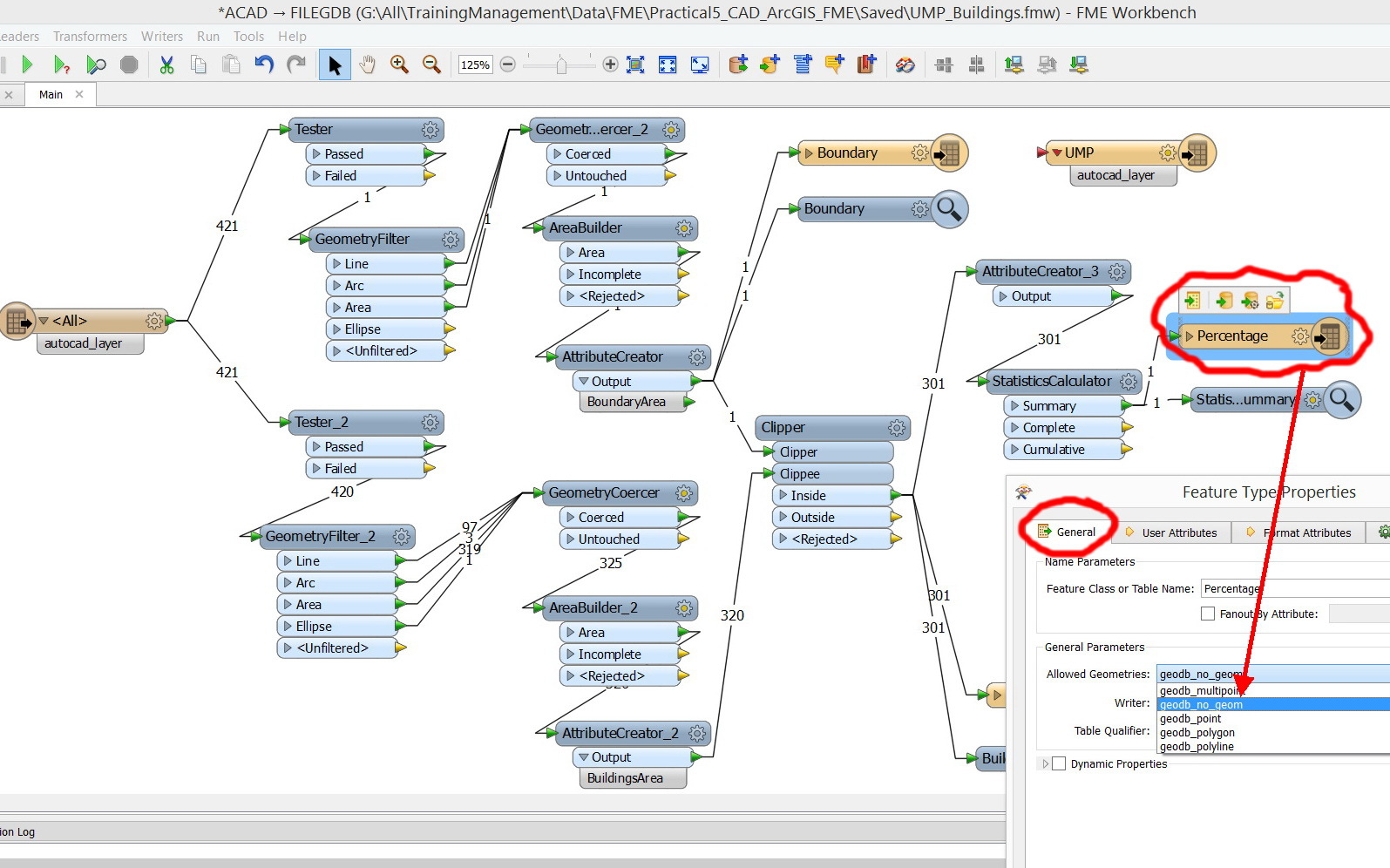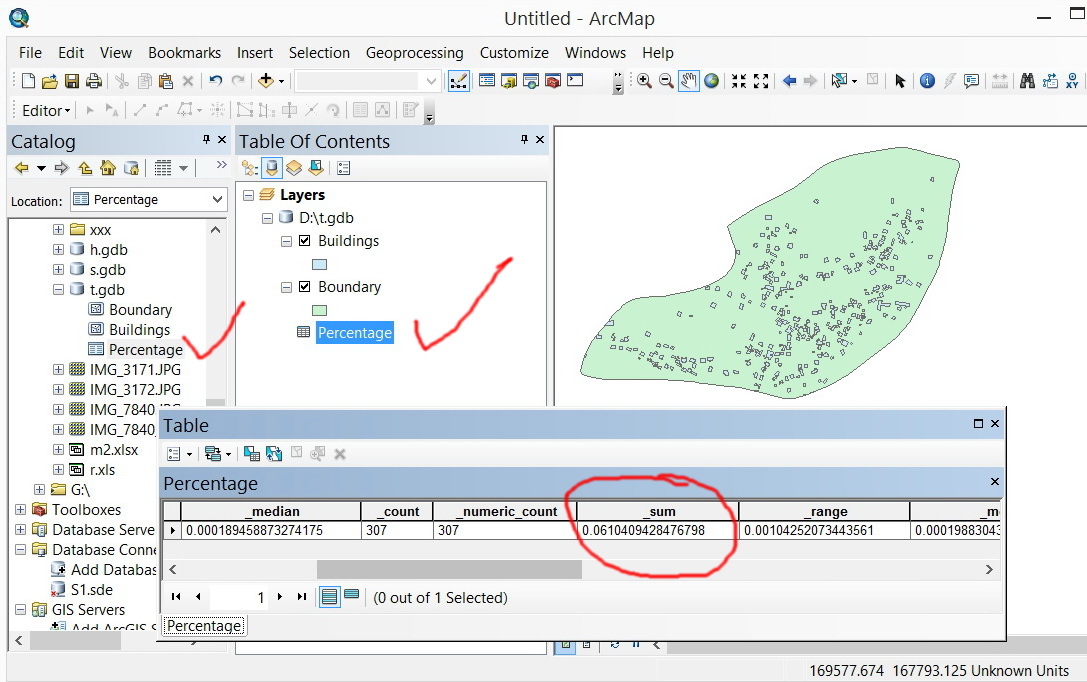I couldn’t figure out the best practice to calculating the percentage of ALL “Buildings” in relation to a “Boundary”.
In the ArcGIS, for example, this sort of work is done as shown in the following model. The results shows that the percentage of buildings in relation to the boundary is 6.96%.
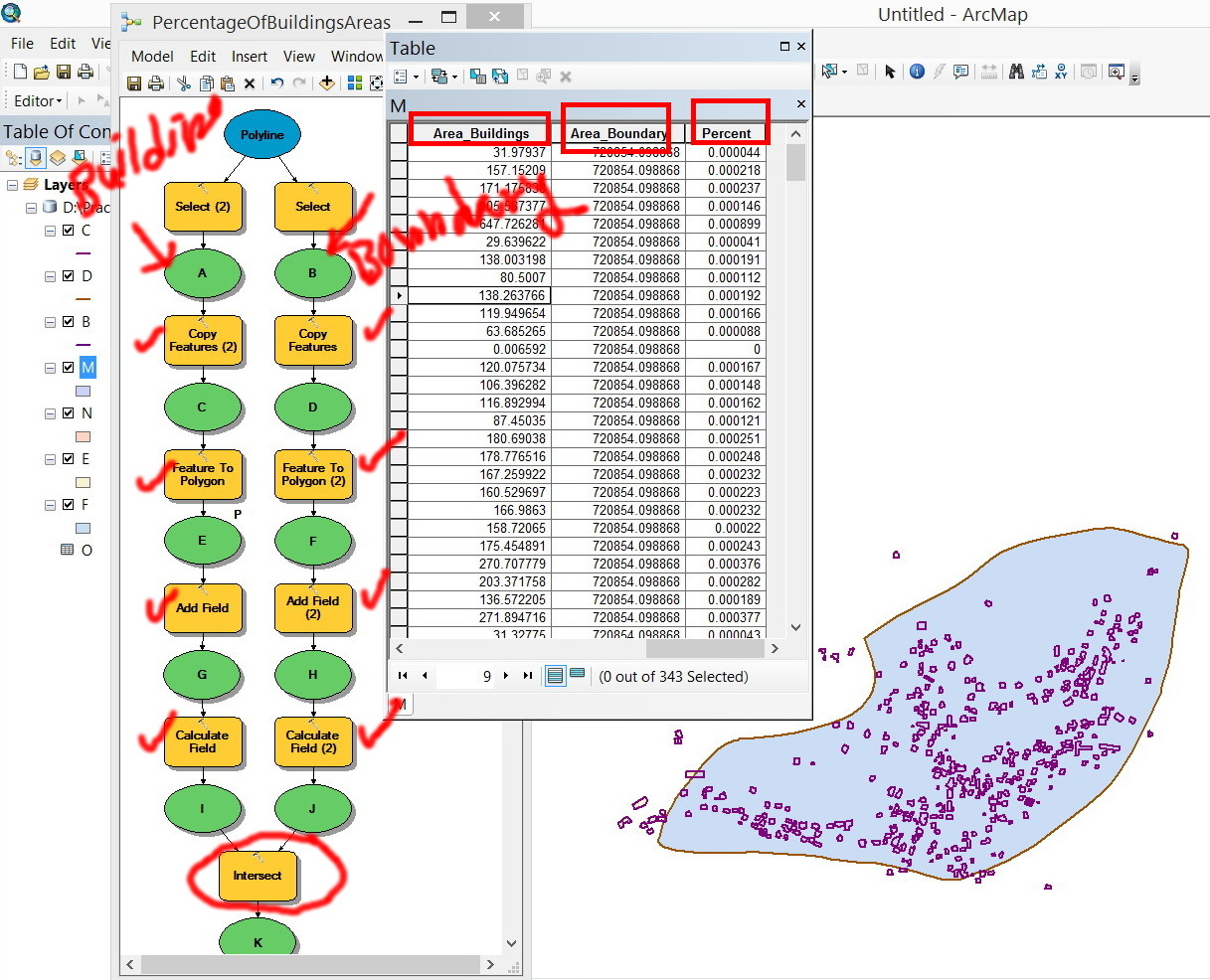
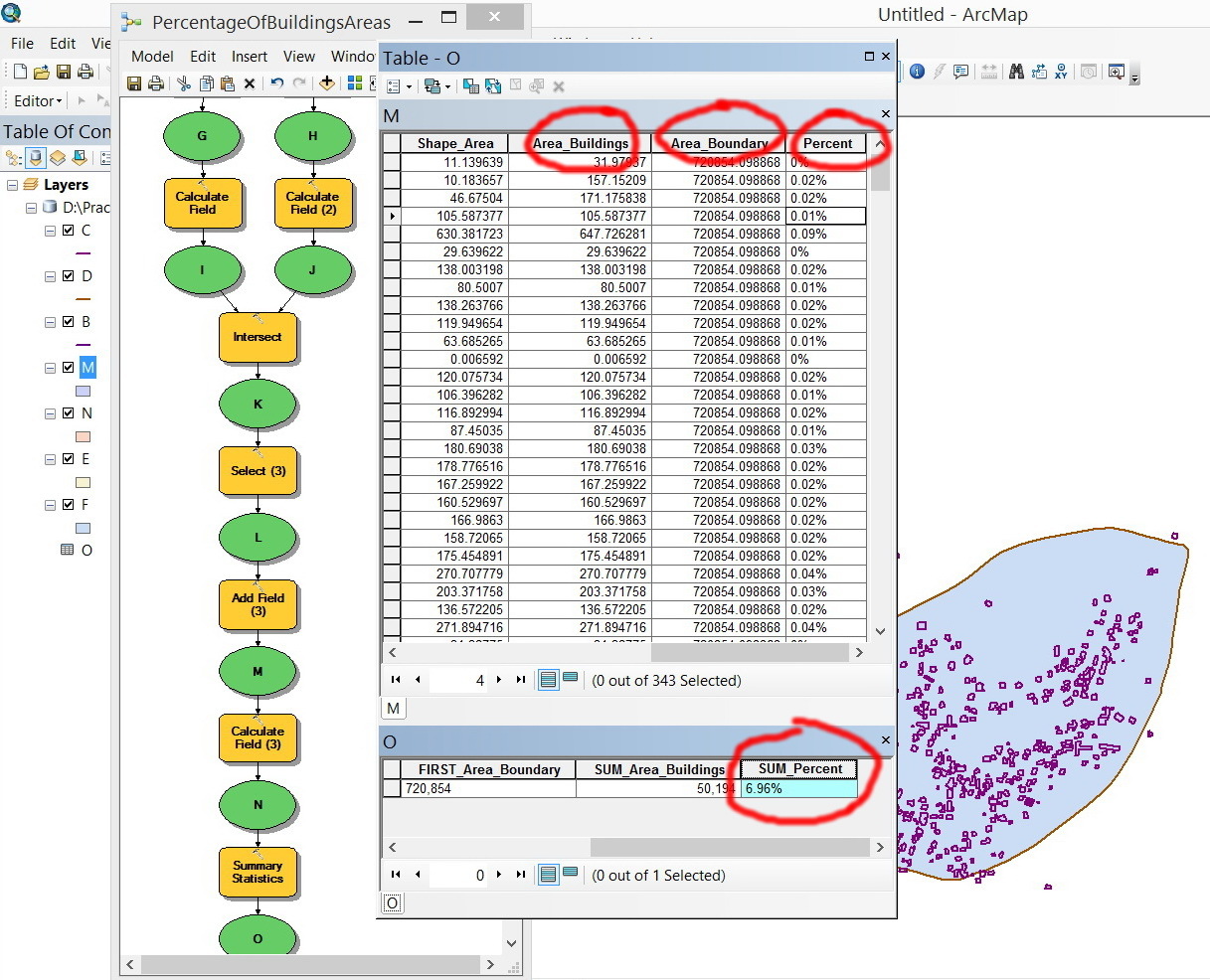
Which equivalent tools in FME that can be used to calculate this value (the percentage of buildings in relation to the boundary)?
The data is store in the link below
http://www.mediafire.com/download/yxzwnk43n9kvz17/UMP_Buildings.dwg
I have started the workbench but with no idea how to proceed
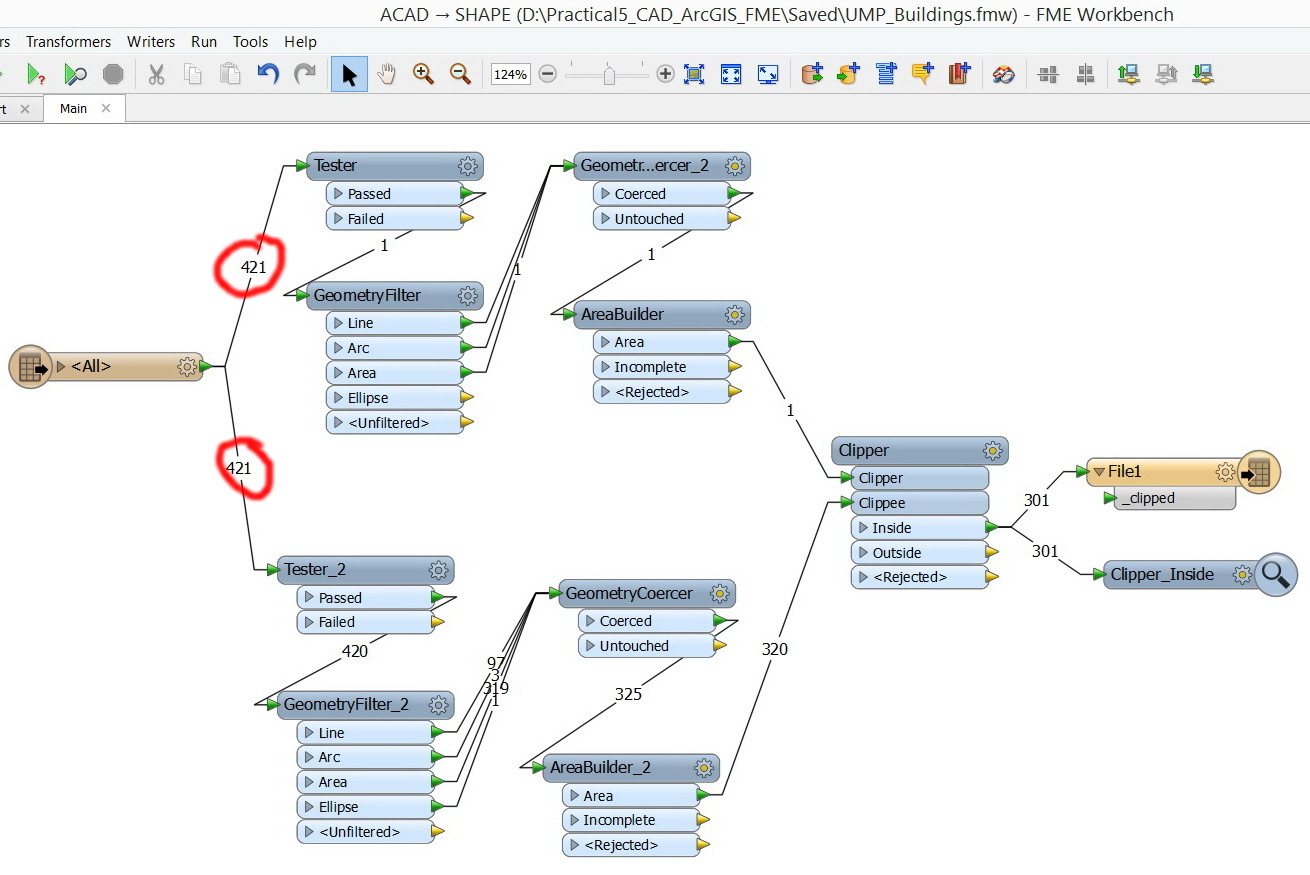
Thank you
Best
Jamal


